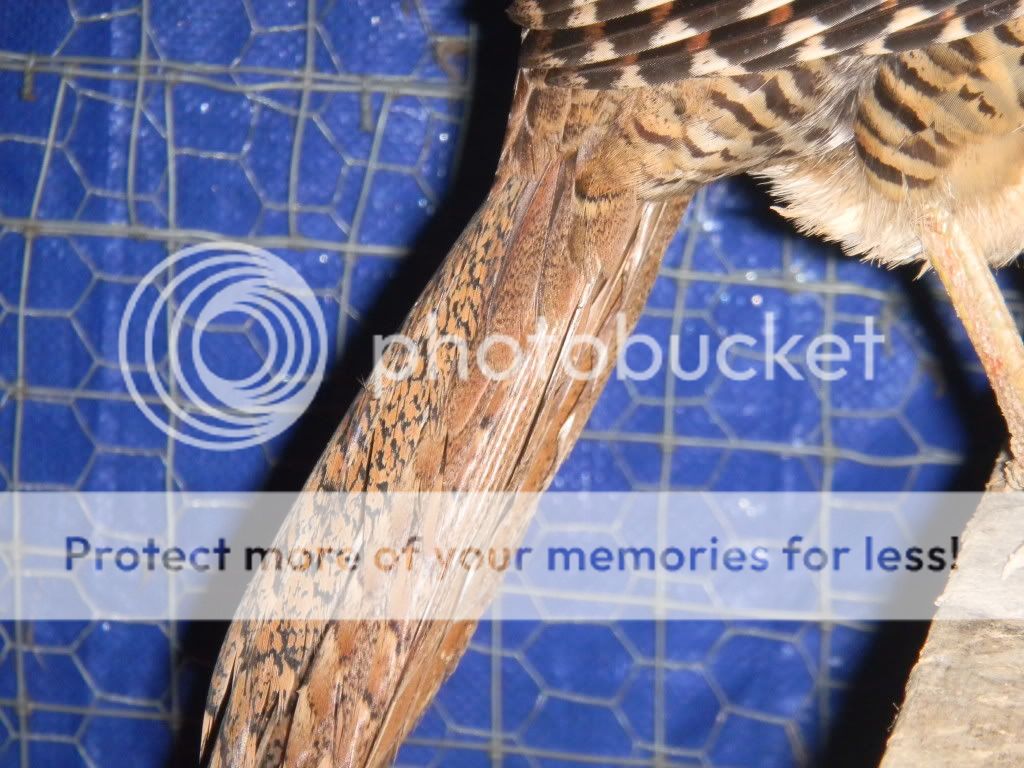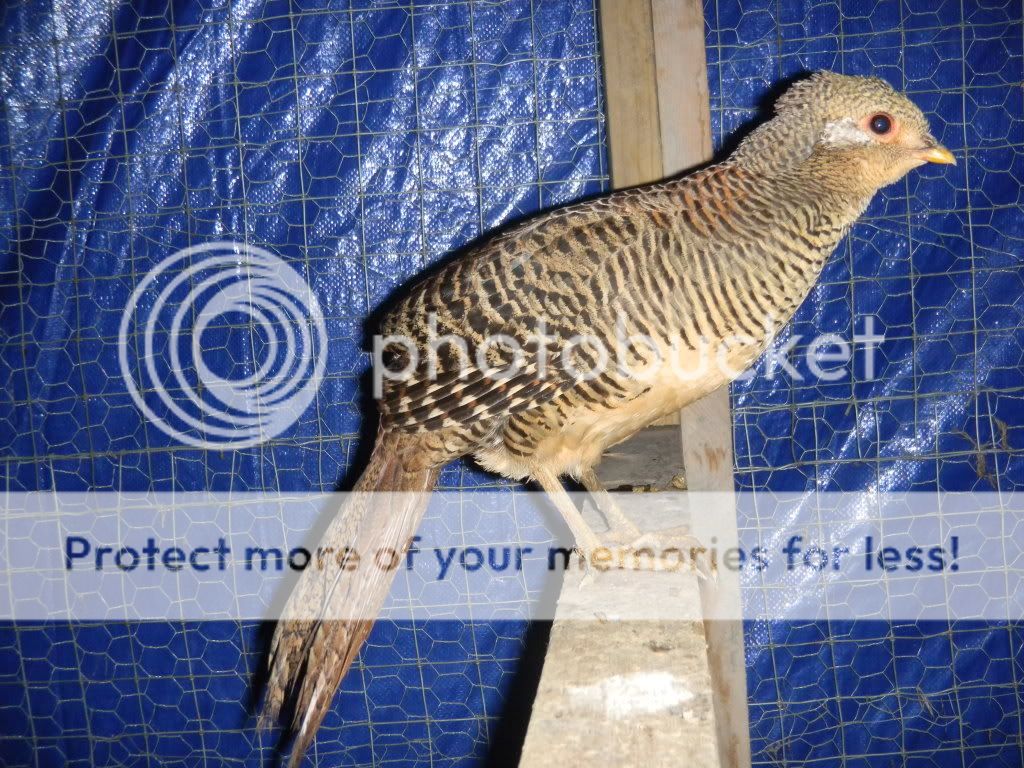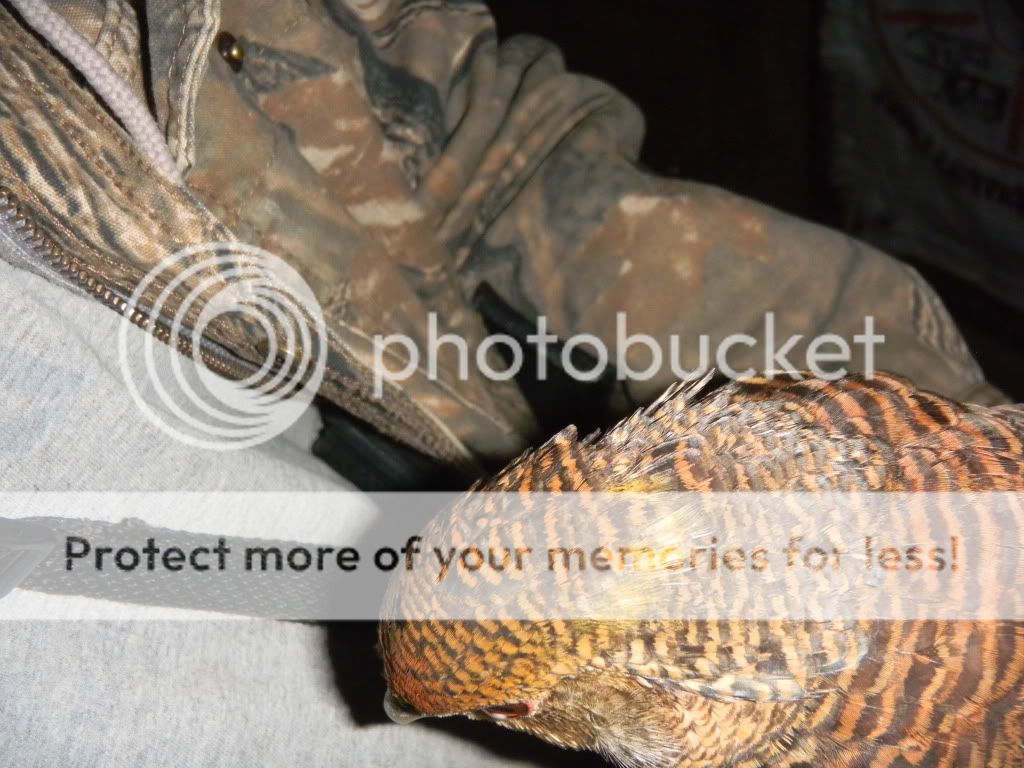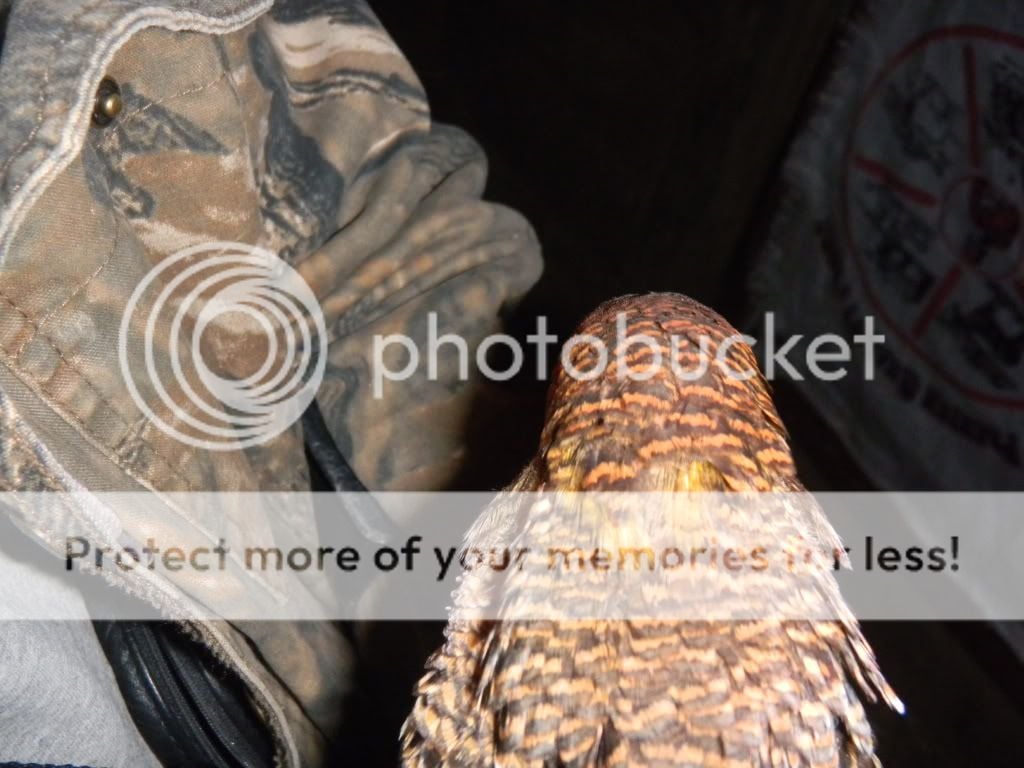Check out my RG hen, she has developed spotting on her tail just like the males. She is 4 years old and this year she is getting a males spots. I'm not sure why, but I have a juvenile hen with yellow plumage in her head feathers also. No inbreeding or line breeding is taking place and these two hens aren't related at all. They aren't even in the same pen. Anyone have any ideas, both are laying and the oldest has proven fertile, the males still court them, but it looks weird to me.
1st hen


2nd hen


1st hen


2nd hen






